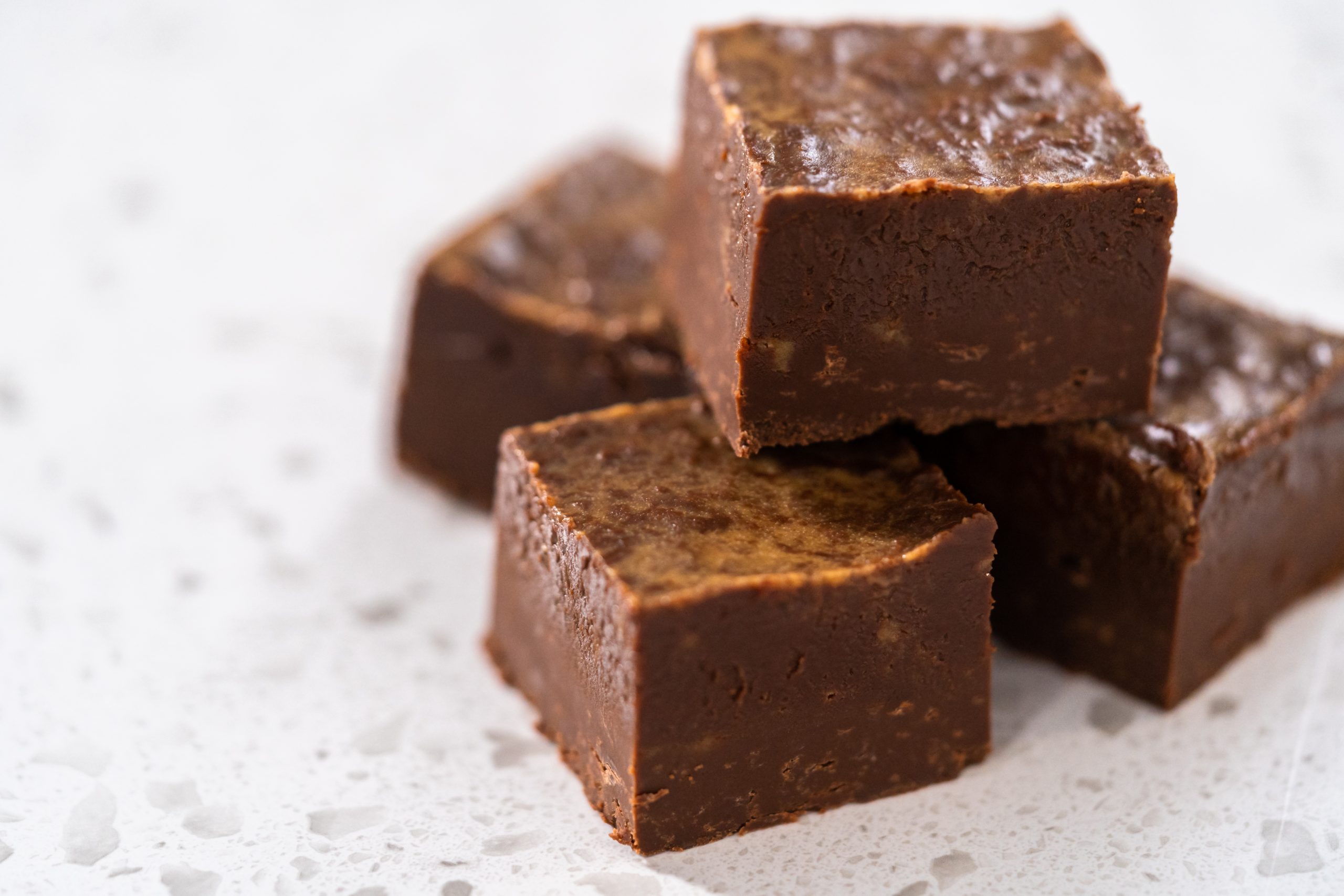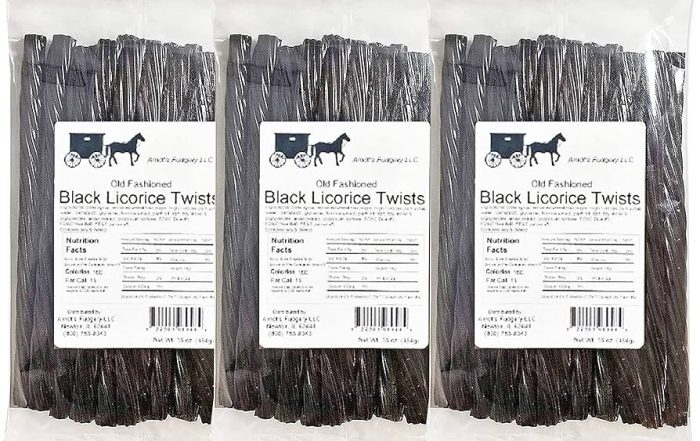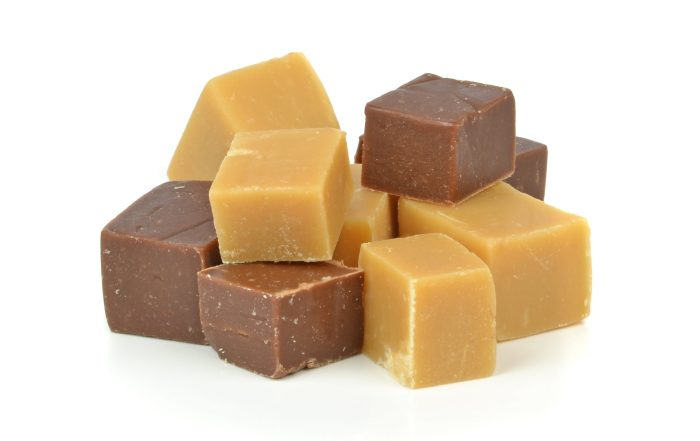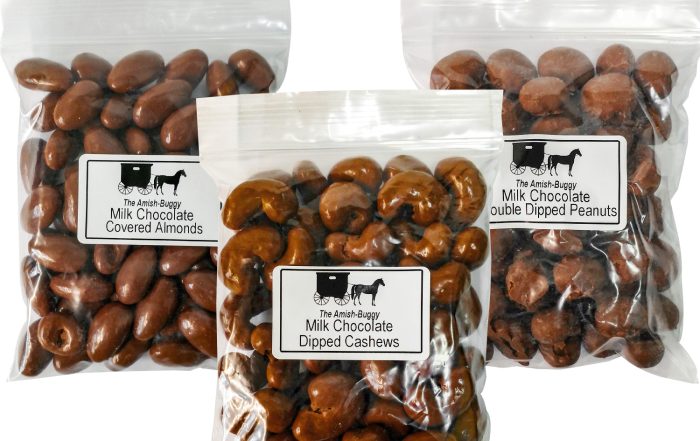
Latest Blogs
Ah, fudge! The sweet, creamy treat that everyone loves. But when it comes to storing it, the debate is on: should you refrigerate fudge or not? Let’s dive into this sugary discussion and find out the best way to keep your fudge fresh and delicious.
What is Fudge?
History of Fudge
Fudge has a rich history that dates back to the late 19th century. It is believed to have originated in the United States when a batch of caramel was “fudged,” leading to the creation of this delightful confection. Since then, fudge has become a favorite treat, especially during holidays and special occasions. The origins of fudge are somewhat shrouded in mystery, but one thing is clear: it quickly became a beloved dessert, spreading in popularity from the U.S. to the rest of the world. Traditionally, fudge has been a staple at country fairs, Christmas markets, and small-town candy shops, with each region developing its own unique twist on the classic recipe.
Ingredients of Fudge
Traditional fudge is made with just a few simple ingredients: sugar, butter, and milk. However, modern recipes often include various flavors, nuts, and even chocolate to create a wide range of fudge varieties. The simplicity of its ingredients makes fudge a versatile and adaptable dessert. Today, you can find fudge in countless flavors, from classic chocolate and vanilla to more adventurous options like peanut butter, maple, and even bacon-infused fudge. The addition of nuts, dried fruits, and candies further enhances its appeal, providing a textural contrast and additional layers of flavor.
How is Fudge Made?
Traditional Methods
Making fudge traditionally involves heating sugar, butter, and milk to a specific temperature and then cooling it while beating the mixture to achieve a smooth, creamy texture. This method requires precision and patience but results in the classic fudge consistency we all know and love. The process begins with mixing the ingredients and heating them to a temperature of around 234°F (112°C), known as the soft-ball stage. After reaching this temperature, the mixture is removed from heat and allowed to cool slightly before beating it until it thickens and becomes creamy. This labor-intensive process is what gives traditional fudge its characteristic smoothness and melt-in-the-mouth texture.

Modern Techniques
Today, there are quicker and easier methods to make fudge, such as using condensed milk and microwave techniques. These methods have made fudge-making accessible to everyone, even those without extensive candy-making experience. Microwave fudge, for example, involves melting chocolate chips with condensed milk and butter, then mixing in any desired flavors or add-ins before chilling the mixture to set. While these modern methods may not produce the same texture as traditional fudge, they offer a convenient and quick alternative for busy home cooks.
The Importance of Storing Fudge Properly
Factors Affecting Fudge Shelf Life
Fudge’s shelf life can be affected by several factors, including the ingredients used, the method of preparation, and how it is stored. Proper storage is crucial to maintain its texture and flavor. Factors such as humidity, temperature, and exposure to air can all impact how long your fudge stays fresh. For instance, fudge made with dairy ingredients tends to have a shorter shelf life compared to fudge made with condensed milk or non-dairy alternatives.
Common Storage Mistakes
Many people make the mistake of leaving fudge uncovered or in a humid environment, which can lead to spoilage or a change in texture. Avoiding these common mistakes will help keep your fudge fresh for longer. Another common mistake is storing fudge near other strong-smelling foods, which can cause it to absorb unwanted flavors. Additionally, improper wrapping can lead to the fudge drying out or becoming overly sticky.
Should You Refrigerate Fudge?
Pros of Refrigerating Fudge
Refrigerating fudge can help extend its shelf life, especially in warmer climates. It can prevent the fudge from becoming too soft or melting, ensuring it stays firm and enjoyable. In hot and humid environments, refrigeration can be particularly beneficial in maintaining the fudge’s structure and preventing it from becoming a gooey mess. Moreover, refrigeration can help inhibit the growth of bacteria and mold, further extending the fudge’s freshness.
Cons of Refrigerating Fudge
However, refrigerating fudge can also cause it to dry out or become too hard. This can affect the creamy texture that makes fudge so delightful. Additionally, fudge stored in the fridge can absorb odors from other foods, altering its flavor. To mitigate these issues, it’s important to wrap the fudge tightly in plastic wrap or aluminum foil before storing it in an airtight container. Despite these precautions, some purists argue that refrigeration can compromise the fudge’s texture and taste, making it less enjoyable to eat.
How Long Will Fudge Last Unrefrigerated?
Room Temperature Storage Tips
When stored properly in an airtight container, fudge can last for about one to two weeks at room temperature. Keeping it in a cool, dry place away from direct sunlight will help maintain its quality. Room temperature storage is generally sufficient for most types of fudge, provided that the
environmental conditions are not too extreme. For best results, store fudge in a pantry or cupboard, ensuring that it is well-sealed to prevent exposure to air and moisture.
What is the Best Way to Store Fudge?
Airtight Containers
Using airtight containers is the best way to store fudge, whether you choose to keep it at room temperature or in the refrigerator. This prevents moisture and air from affecting the fudge’s texture and flavor. Airtight containers provide a barrier against humidity and other environmental factors that can cause the fudge to spoil. For added protection, consider wrapping individual pieces of fudge in wax paper or plastic wrap before placing them in the container.
Refrigeration Methods
If you decide to refrigerate your fudge, wrap it tightly in plastic wrap or aluminum foil before placing it in an airtight container. This will help prevent it from drying out and protect it from absorbing other odors. When refrigerating fudge, it’s important to keep it away from foods with strong odors, such as onions or garlic, as fudge can easily absorb these smells. Additionally, storing fudge in the coldest part of the refrigerator, such as the back or the bottom shelf, can help maintain a consistent temperature.
Freezing Fudge for Long-Term Storage
For long-term storage, freezing fudge is an excellent option. Wrap individual pieces in plastic wrap and store them in an airtight container or freezer bag. Fudge can last up to three months in the freezer. When ready to eat, let it thaw at room temperature. Freezing fudge can be particularly useful if you’ve made a large batch and want to enjoy it over an extended period. Just be sure to label the containers with the date to keep track of how long the fudge has been stored.
How to Tell If Fudge Has Gone Bad
Signs of Spoiled Fudge
Spoiled fudge can be identified by changes in color, texture, or smell. If the fudge has a sour odor, is excessively hard or crumbly, or has visible mold, it is best to discard it. Other signs of spoilage include an off-taste or a gritty texture, which can indicate that the fudge has gone stale. While consuming spoiled fudge is unlikely to cause serious harm, it is best to err on the side of caution and discard any fudge that shows signs of spoilage.
Tips for Keeping Fudge Fresh
Avoiding Moisture
Moisture is the enemy of fudge. Always ensure that your storage containers are dry and that the fudge is kept away from humid environments. Moisture can cause fudge to become sticky and lose its creamy texture. To avoid this, store fudge in a cool, dry place and use airtight containers to prevent moisture from seeping in. If you live in a particularly humid climate, consider adding a small packet of silica gel to the storage container to absorb excess moisture.
Temperature Control
Keeping fudge at a consistent temperature is key to maintaining its quality. Avoid drastic temperature changes, as this can affect the texture and flavor of the fudge. If you plan to transport fudge, use an insulated cooler or thermal bag to keep it at a stable temperature. Additionally, avoid placing fudge near heat sources or in direct sunlight, as this can cause it to melt or become overly soft.
Check out our Facebook for more sweet news!
Conclusion
The great fudge debate boils down to personal preference and environmental factors. While refrigerating fudge can help extend its shelf life in warmer climates, storing it at room temperature in airtight containers is generally sufficient for maintaining its texture and flavor. Ultimately, the best way to store fudge depends on your specific circumstances and how quickly you plan to consume it. Whether
you choose to refrigerate, freeze, or store your fudge at room temperature, following proper storage practices will ensure that it remains delicious and enjoyable for as long as possible. Happy fudging!
FAQs
Can you refreeze fudge?
Yes, you can refreeze fudge. However, repeated freezing and thawing can affect its texture and flavor. It’s best to freeze fudge in small portions to avoid the need for refreezing. When refreezing fudge, be sure to wrap it tightly in plastic wrap or aluminum foil and store it in an airtight container to prevent freezer burn and preserve its quality.
Does fudge taste different after being refrigerated?
Fudge can sometimes taste different after being refrigerated due to the absorption of other odors and slight changes in texture. To minimize this, store fudge in an airtight container. If you notice a change in taste, allow the fudge to come to room temperature before eating, as this can help restore its original flavor and texture.
How do you soften hard fudge?
To soften hard fudge, let it sit at room temperature for a few hours or microwave it in short bursts (5-10 seconds) until it reaches the desired consistency. Be careful not to overheat the fudge, as this can cause it to melt. Another method is to place the fudge in a sealed plastic bag and immerse it in warm water for a few minutes, checking frequently until it softens.
Can you store fudge with other desserts?
It’s best to store fudge separately from other desserts to prevent it from absorbing their flavors and odors. Use airtight containers to keep it fresh. If you must store fudge with other desserts, ensure that each item is individually wrapped and placed in separate compartments within the container to minimize flavor transfer.
Is it safe to eat fudge past its expiration date?
If the fudge shows no signs of spoilage such as mold, off-odor, or discoloration, it may still be safe to eat past its expiration date. However, its quality might not be as good. Use your senses to determine if the fudge is still enjoyable, and when in doubt, it’s better to err on the side of caution and discard it.







